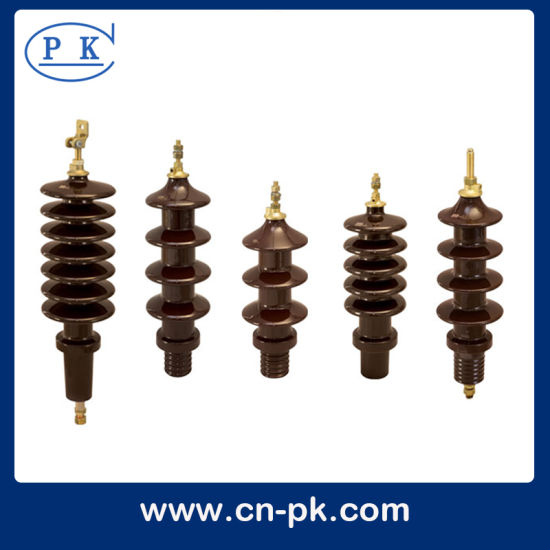Tie-Top Pin Insulators

Tie-top pin insulators are usually made from composite materials and consist of a threaded steel pin that is anchored to the pole. The insulator itself consists of a top cap, where the conductor is fastened, and a skirt that covers the main body of the insulator. The top cap is designed to allow the conductor to be suspended from the insulator while providing electrical insulation. The skirt, on the other hand, prevents rain, snow, and other contaminants from building up on the surface of the insulator and causing a failure.
The most important parameter of a tie-top pin insulator is its mechanical strength. A typical 36KV tie-top pin insulator has a mechanical strength of 5KN, which means that it can withstand up to 5,000 N (about 1,125 lbs) of vertical load without breaking. This makes it ideal for use in high-voltage power distribution lines where the loads can be quite high.
Polymer Pin Insulators
Polymer pin insulators are made from high-strength, corrosion-resistant polymers that offer excellent electrical insulation properties. They consist of a threaded steel pin that is anchored to the pole, and a polymer insulator that is designed to provide electrical insulation between the conductor and the pole.
The most important parameter of a polymer pin insulator is its dielectric strength. A typical 36KV polymer pin insulator has a dielectric strength of around 115 kV/cm, which means that it can withstand a high voltage without breaking down. This makes polymer pin insulators ideal for use in high-voltage power distribution lines where the voltage levels can be quite high.
Differences between Tie-Top Pin Insulators and Polymer Pin Insulators
One of the main differences between tie-top pin insulators and polymer pin insulators is the material used to manufacture them. Tie-top pin insulators are usually made from composite materials, while polymer pin insulators are made from high-strength polymers.
Another difference is the mechanical strength and dielectric strength of the two types of insulators. Tie-top pin insulators have a higher mechanical strength than polymer pin insulators, while polymer pin insulators have a higher dielectric strength than tie-top pin insulators.
In terms of cost, tie-top pin insulators are generally more expensive than polymer pin insulators due to the higher material cost and manufacturing complexity.
Conclusion
In conclusion, both tie-top pin insulators and polymer pin insulators have their own strengths and weaknesses. Tie-top pin insulators offer high mechanical strength and excellent resistance to contamination, while polymer pin insulators offer high dielectric strength and excellent electrical insulation properties. When choosing between the two types of insulators, it is important to take into account the specific requirements of your power distribution line and choose the one that is best suited for your needs.